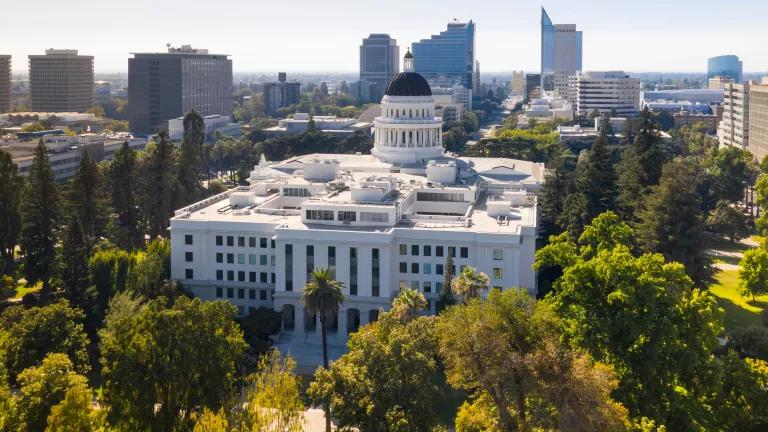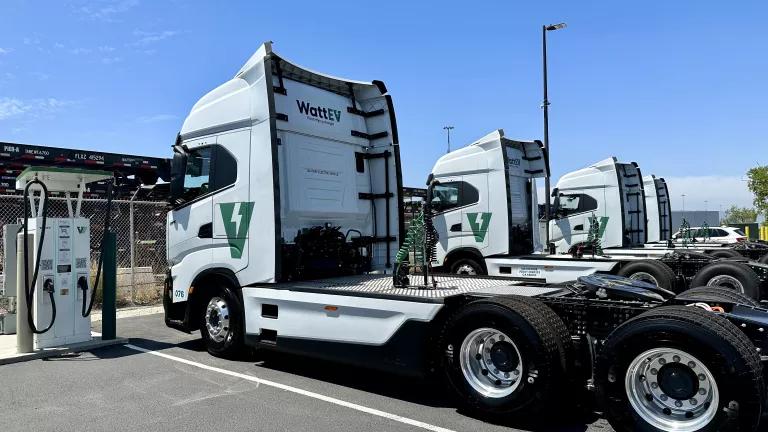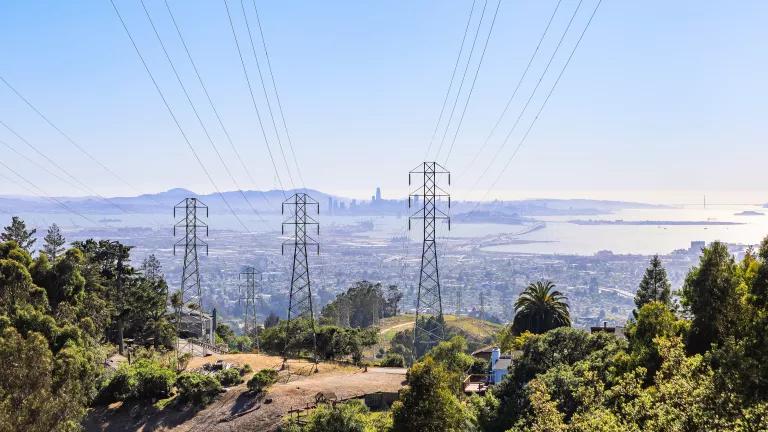CA Refineries Are Driving Our Addiction to Oil Imports
If California truly means business about moving away from fossil fuels, it’s going to have to tackle the refinery problem—which puts surrounding communities at risk every day from pollution and frequent accidents.
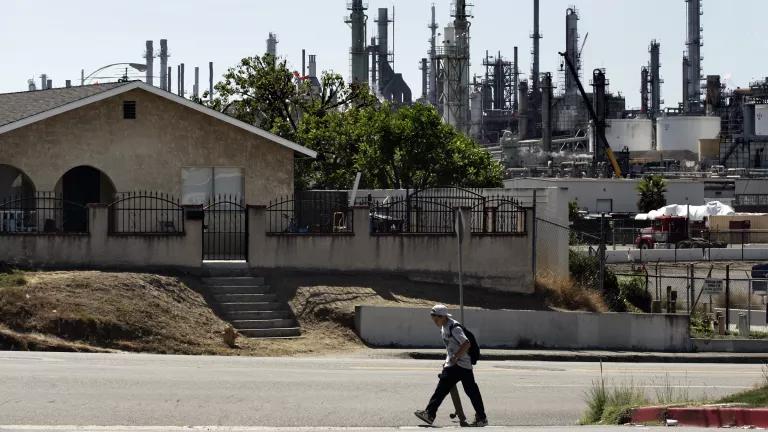
ConocoPhillips refinery in the Wilmington district of Los Angeles
Jonathan Alcorn/Bloomberg via Getty Images
California’s oil fields, a century ago full of gushing geysers of easily accessible crude, are now increasingly played out. The geysers are long gone, and much of the remaining oil in California is a sludgy substance, roughly the consistency of peanut butter, that has to be melted out of the ground through the spectacularly energy-intensive process of cyclic steaming. Production levels have been in steady decline, with California having dropped from third to seventh among oil-producing states in recent years.
But like an aging diva, California’s oil industry is not going quietly. Whenever confronted with even modest steps to curtail its polluting excesses, industry boosters immediately leap to their favorite defense: the specter of more oil imports. Roughly speaking, the talking point is, California needs lots of petroleum products, and if we don’t get them from California-produced crude oil, we’ll have to import the oil instead. Thus letting Bad Countries that do Mean Things and don’t take care of their environment supply us with our oil, rather than using our own nice homegrown oil to make our cars and trucks go.
That argument, to put it as politely as possible, is utter nonsense. Yes, we are importing more crude oil lately as California production declines. That train actually left the station awhile ago, with California now importing about three quarters of its oil as shown in the chart below. But the reason for the imports is not just to meet California consumer demand. The West Coast’s demand for refined crude oil products has actually been going down this past decade, not up, thanks in part to programs such as Advanced Clean Car Standards, Low Carbon Fuel Standard requirements, and improved land-use planning. Yet crude oil imports to West Coast refineries (of which California has far and away the most) have been going up during that same time period. And—this is the kicker—refinery exports have been increasing during that period as well.
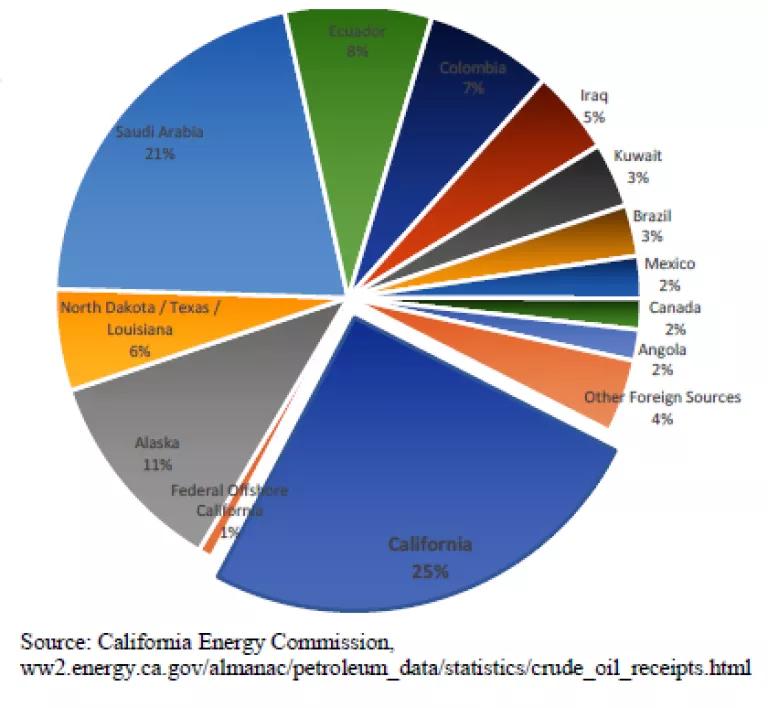
Source of crude oil at California refineries
So it doesn’t take a degree in math to see what’s actually going on. Refineries are turning to imported crude oil not just to meet consumer needs here but also so they can turn around and export the refined products. As our coalition partner Communities for a Better Environment (CBE) has succinctly put it, California is at risk of becoming the gas station of the Pacific Rim.
All of this is explained in more depth in a recently released report by CBE and report author Greg Karras concerning California’s refineries and the role they play in both polluting communities and risking the state’s ability to meet its climate targets. The report observes that between 2013 and 2017, California refineries increased both their crude oil imports and their refined fuel exports by roughly similar amounts. As shown in the top figure below, California refineries now export more than 200,000 barrels of refined products per day (not even counting the large amounts of polluting petcoke they export in addition to that). Yet, as shown in the bottom figure (from CBE’s earlier fact sheet on the subject, covering the time frame 2007-2018), these increasing exports and increasing refinery production levels needed to produce them are happening against a backdrop of declining in-state demand for refined products.
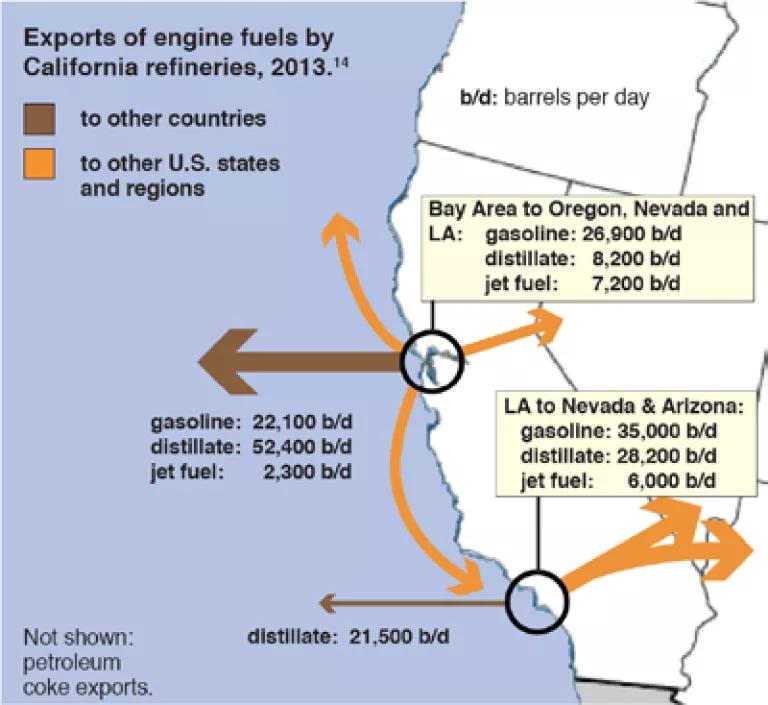
California refinery exports
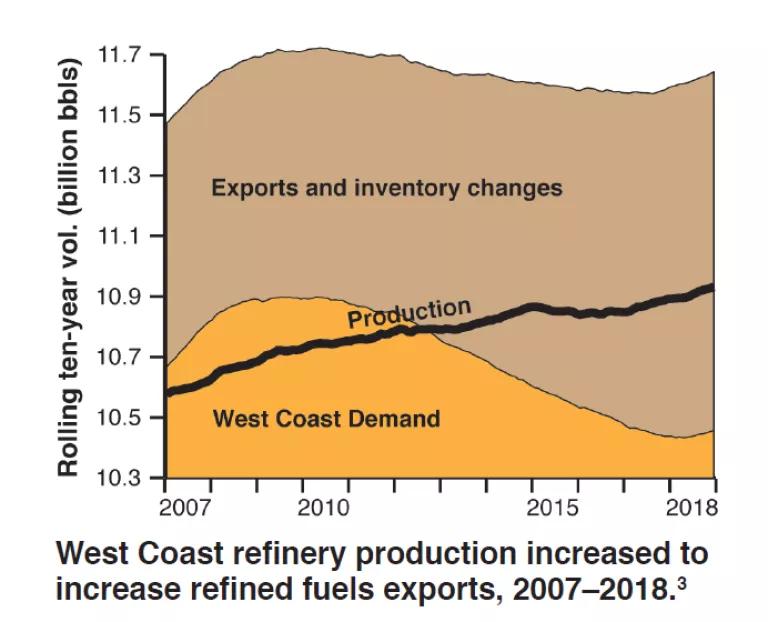
Refinery production and West Coast demand
There are multiple additional layers of silliness in industry’s “either drill it here or drill it there” argument. Although one should never minimize the environmental destruction wrought by oil drilling elsewhere in the world, the idea that California’s oil industry is a paragon of environmental responsibility compared to everyone else doesn’t pass the laugh test. Our state doesn’t even have a setback rule prohibiting oil drilling—and the toxic pollution it regularly spews – near homes, schools, and hospitals; and the industry has a decades-long history of spills and other accidents. Additionally, industry’s import argument is routinely used to push back against even the slightest regulatory enhancement—as though, for instance, legislation aimed at requiring drillers to cover the cost of their own well decommissioning was going to push California’s industry over the edge and invite a flood of imports. And, most fundamentally, the talking point glosses over the fact that most of California’s oil is already imported, for reasons that have everything to do with natural declines in production levels and little to do with anything environmentalists or regulators have ever done.
But the key takeaway from unpacking industry’s argument—and the CBE research that demolishes it—is that oil refineries are at the heart of California’s fossil fuel dependence problem. These refineries, and their appetite for exports, are a big part of what’s driving California’s increasing crude imports.
There is growing consensus—supported by Governor Newsom—that oil is not our state’s future and should be phased out. But the oil extraction industry already has a good jump start on its own phaseout, as production levels have been on a steady downward trajectory. It’s the refining sector that’s going the other direction, actually increasing its production levels. California refineries are actively retooling and expanding to enable more oil processing, to feed their growing export market.
If California truly means business about moving away from fossil fuels and toward a clean energy future, it’s going to have to tackle the refinery problem. As the CBE report points out, the massive carbon pollution load from California refineries could affect the state’s ability to meet its climate goals. These refineries are designed to process the heaviest types of crude, such as California’s, which requires considerably more energy and generates more pollution than processing lighter crudes. Additionally, refineries contribute heavily to California’s persistent fossil fuel–driven air quality problem, dumping massive loads of particulate matter and other harmful pollutants into the air, adversely affecting the health of the mostly communities of color that surround them. Much of that pollution—20 percent to 33 percent—is from refining imported oil to export fuel Californians' don't use or need.
There is no silver bullet for weaning our state off crude oil refining. Authority over refining operations exists at all levels of government, meaning that turning our situation around will require cooperation by multiple authorities and strong public support. For starters, there needs to be a concerted pushback against any new refinery expansions, as locking in additional refining capacity is absolutely the last thing the state needs. Additionally, to counteract decades of grandfathering under regulatory reviews that apply only to new and modified sources, air districts should impose refinery-wide limits on criteria and toxic air contaminant emissions as a step toward making refiners—rather than communities—absorb the true cost of their operations.
The state should also revisit the issue of refinery-specific greenhouse gas emissions limits, which were part of a bitterly contested bargain to secure the supermajority needed to extend California’s climate investments and pass urgent companion air quality legislation, AB 617.
And, of course, demand is a big part of the equation. We’re on the right track, but continuing California’s trajectory of declining demand and hastening that decline with increased support for electric vehicles, clean transportation options, and other measures must be part of the solution.
What’s most important is that we act sooner rather than later. Refinery communities are at risk every day from pollution and frequent accidents. Additionally, the refinery workforce needs the state’s support during this phasedown, with resources and time to retrain and transition to other employment, in the clean energy industry or elsewhere. As the CBE report notes, phasing out crude oil refining is likely a necessary part of meeting the state’s climate goals, but we can do it more gradually and less painfully if we start now.
So one cheer for the oil production industry’s xenophobia-tinged argument that California needs to curb crude oil imports, which is inadvertently correct. We do need to curb them—nt by giving in to industry’s self-pitying crusade against regulation but by going after the voraciously importing refineries that are the heart of the problem.


